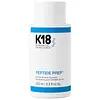What's inside
What's inside
 Key Ingredients
Key Ingredients

 Benefits
Benefits

 Concerns
Concerns

No concerns
 Ingredients Side-by-side
Ingredients Side-by-side

Water
Skin ConditioningSodium C14-16 Olefin Sulfonate
CleansingCocamidopropyl Betaine
CleansingSodium Methyl 2-Sulfolaurate
CleansingSodium Lauryl Sulfoacetate
CleansingSh-Oligopeptide-78
Panthenol
Skin ConditioningGlycerin
HumectantSodium Phytate
Guar Hydroxypropyltrimonium Chloride
Skin ConditioningDisodium 2-Sulfolaurate
CleansingCaprylyl Glycol
EmollientCaprylhydroxamic Acid
Benzoic Acid
MaskingCitric Acid
BufferingSodium Hydroxide
BufferingParfum
MaskingLimonene
PerfumingWater, Sodium C14-16 Olefin Sulfonate, Cocamidopropyl Betaine, Sodium Methyl 2-Sulfolaurate, Sodium Lauryl Sulfoacetate, Sh-Oligopeptide-78, Panthenol, Glycerin, Sodium Phytate, Guar Hydroxypropyltrimonium Chloride, Disodium 2-Sulfolaurate, Caprylyl Glycol, Caprylhydroxamic Acid, Benzoic Acid, Citric Acid, Sodium Hydroxide, Parfum, Limonene
Alternatives
Ingredients Explained
These ingredients are found in both products.
Ingredients higher up in an ingredient list are typically present in a larger amount.
Panthenol is a common ingredient that helps hydrate and soothe the skin. It is found naturally in our skin and hair.
There are two forms of panthenol: D and L.
D-panthenol is also known as dexpanthenol. Most cosmetics use dexpanthenol or a mixture of D and L-panthenol.
Panthenol is famous due to its ability to go deeper into the skin's layers. Using this ingredient has numerous pros (and no cons):
Like hyaluronic acid, panthenol is a humectant. Humectants are able to bind and hold large amounts of water to keep skin hydrated.
This ingredient works well for wound healing. It works by increasing tissue in the wound and helps close open wounds.
Once oxidized, panthenol converts to pantothenic acid. Panthothenic acid is found in all living cells.
This ingredient is also referred to as pro-vitamin B5.
Learn more about Panthenol